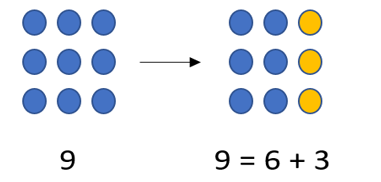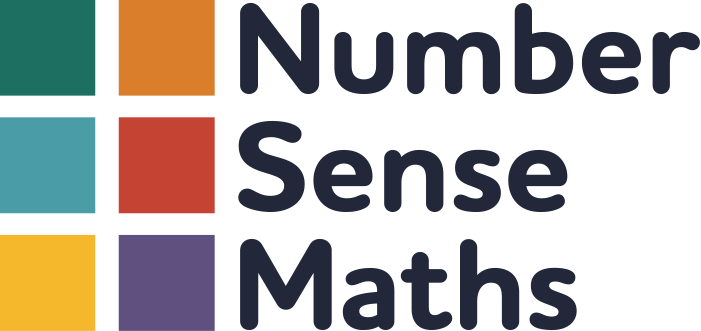Number Sense Maths Principle 3
We have an innate ability to process quantities visually. We can use this to support our learning of addition and subtraction facts.
Research Finding
Babies of 6 months have the ability to visually process small quantities. Researchers have found evidence of young children’s ability to subitise (recognise and discriminate between small numbers of items without consciously counting)[5,6,7]. As children enter formal education, focus on quantity value often gets lost as children are taught to count. Most children can perform simple calculations involving totals to 3 on entry to school if set in a concrete context[8]. However, an emphasis on counting encouraged children to become over-reliant on counting strategies to solve even simple problems [9].
Application to Number Sense Maths
Number Sense Maths ensures children build visual images of all numbers 10, and develops their ability to subitise randomly and non-randomly arranged quantities up to 10. Later Stages in the programme build on these strong visual foundations, using them to manipulate calculations and solve tricky facts more efficiently. The 9 square below is just one example of applying a visual image to solve a tricky equation.

References
[5] CLEMENTS, D. H. (1999). Subitizing: What is it? Why Teach it?, Teaching Children Mathematics, 5, 400–405.
[6] KLEIN, A. & STARKEY, P. (1988). Universals in the development of early arithmetic cognition. In G.Saxe & M. Gearhart (Eds), Children’s Mathematics (pp. 27–54). San Francisco: JosseyBass.
[7] STARKEY, P., & COOPER, R.G. Jr. (1995). The development of subitizing in young children. British Journal of Developmental Psychology, 13, 399–420.
[8] MA, L., 2011. Three approaches to one-place addition and subtraction: Counting strategies, memorized facts, and thinking tools. Available at lipingma.net.
[9] BOBIS, J. (1996). Visualisation and the development of number sense with kindergarten children. In Ed. J. M. Mulligan, & M. Michelmore (Eds.), Children's number learning: A research monograph of MERGA/AAMT (pp. 17–33). Adelaide: AAMT.
